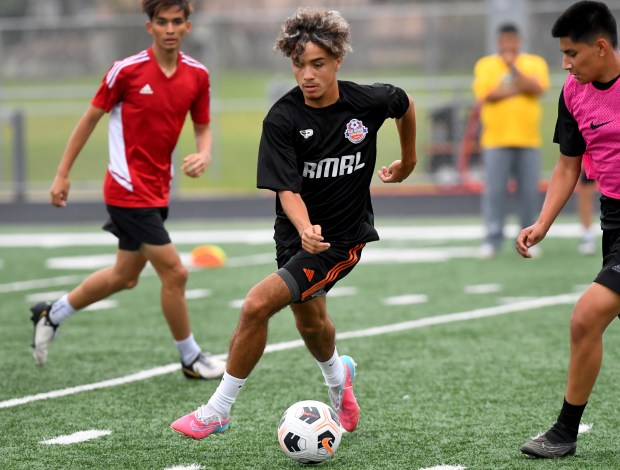Rather than teach children reading below their grade level in school at that reduced plane, educators in Waukegan Community Unit School District 60 will begin instructing all youngsters at their natural year in school as the best way to raise the bar.
Jennifer Rice de la Sanchez, the district’s director of teaching and learning, said giving students reading material at their grade level rather than below is the best way to bring them to the place they belong.
“If they’re reading below grade level, you give them the opportunity to grapple with grade-level texts,” de la Sanchez said. “This starts in kindergarten. If we don’t do it this way, they (may) never get to grade level.”
Part of a new curriculum from Amplify the district is implementing for all elementary school students, de la Sanchez said it will assure all students are learning the same thing as they progress through school.
The District 60 Board of Education unanimously approved the purchase of the $2.83 million Amplify curriculum Monday at the Lincoln Center administration building in Waukegan to help comply with the Illinois Comprehensive Literacy Plan.
Unlike past ways of teaching reading and other subjects to elementary school students, de la Sanchez said students at all 15 elementary schools will have the same program. The plan contains lesson plans all teachers will use rather than devising their own.
Along with the uniformity, the knowledge-based curriculum is fully bilingual. De la Sanchez said the Spanish material is original and not a translation of the English, enabling teaching in English or Spanish as the situation warrants.
Board member Carolina Fabian said at a Feb. 20 committee meeting, where de la Sanchez and her team presented the program, that the new curriculum is an improvement over past bilingual teaching.
“We have had a bilingual curriculum in the past, but it was pure translation. It sounds like this is more culturally relevant, more authentic,” Fabian said.
Learning to read is not just about picking up a book. De la Sanchez said children learn to read and are schooled in other subjects in various ways, including “reading, writing, speaking, listening and thinking.”
While in the first few grades, de la Sanchez said the emphasis is on phonics and learning how to read. By the time students are in third grade, reading skills impact all subjects from science to social studies and even math.
Knowledge keeps building throughout the curriculum which is part of the process, according to district documents. Research shows that “closing the background knowledge gap is necessary for closing the reading gap and ensuring equity for all students.”
Board member Rick Riddle said at the Oct. 20 meeting that he believes the new curriculum is an improvement over how reading was taught in the past. He likes the scientific approach.
“What we’re doing now is we’re going to a reading process to teach reading that’s science-based,” Riddle said. “It’s called the science of reading, and this is a better way to teach reading. It’s equity as well.”
On the last report card from the Illinois State Board of Education, the district’s elementary schools and the high school were given a better overall assessment than the middle schools. De la Sanchez said she believes the benefits of the new program will help the middle schools.
“We use expeditionary learning,” de la Sanchez said. “The knowledge-building in the elementary schools will help our middle school students.”
During several town hall meetings with teachers, de la Sanchez said they liked the new plan. With approximately 90% of the instructors participating, around 80% liked what they saw of the new curriculum.





